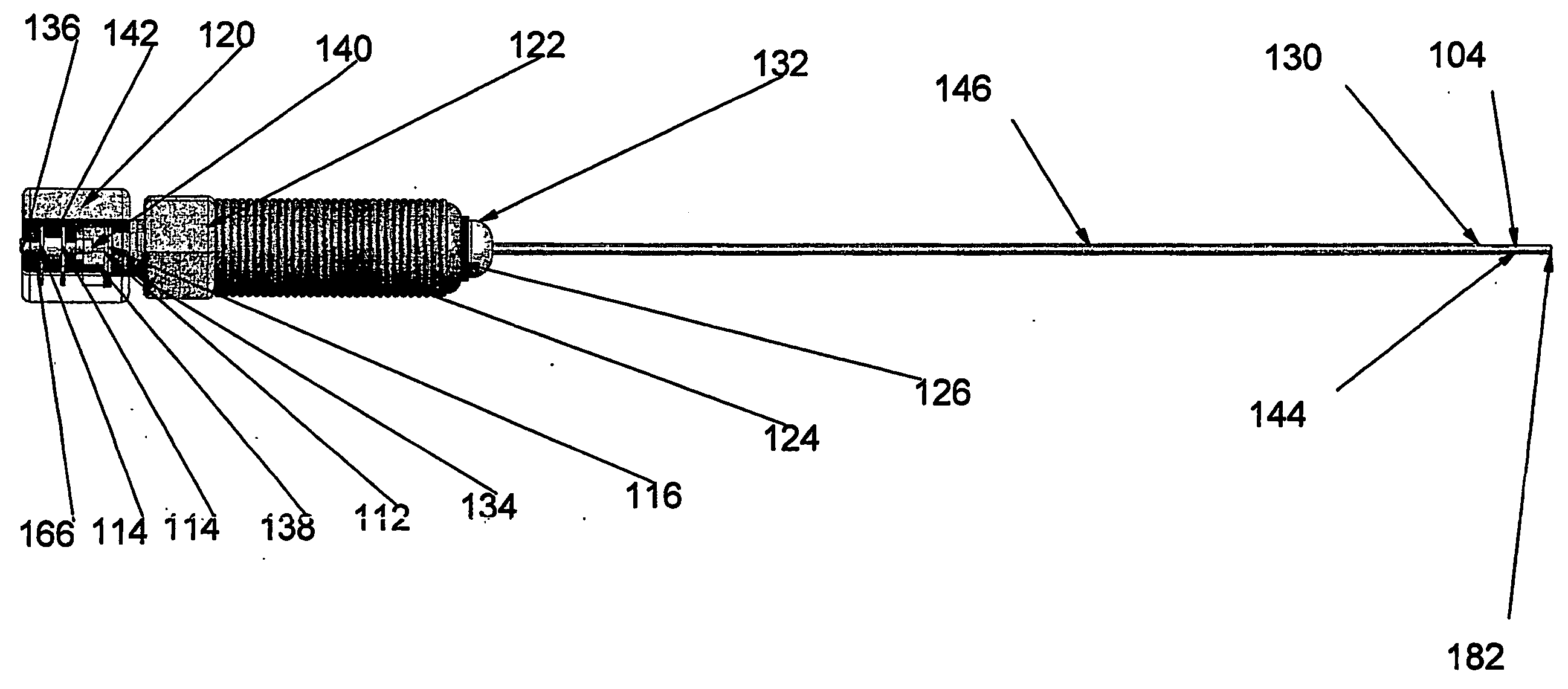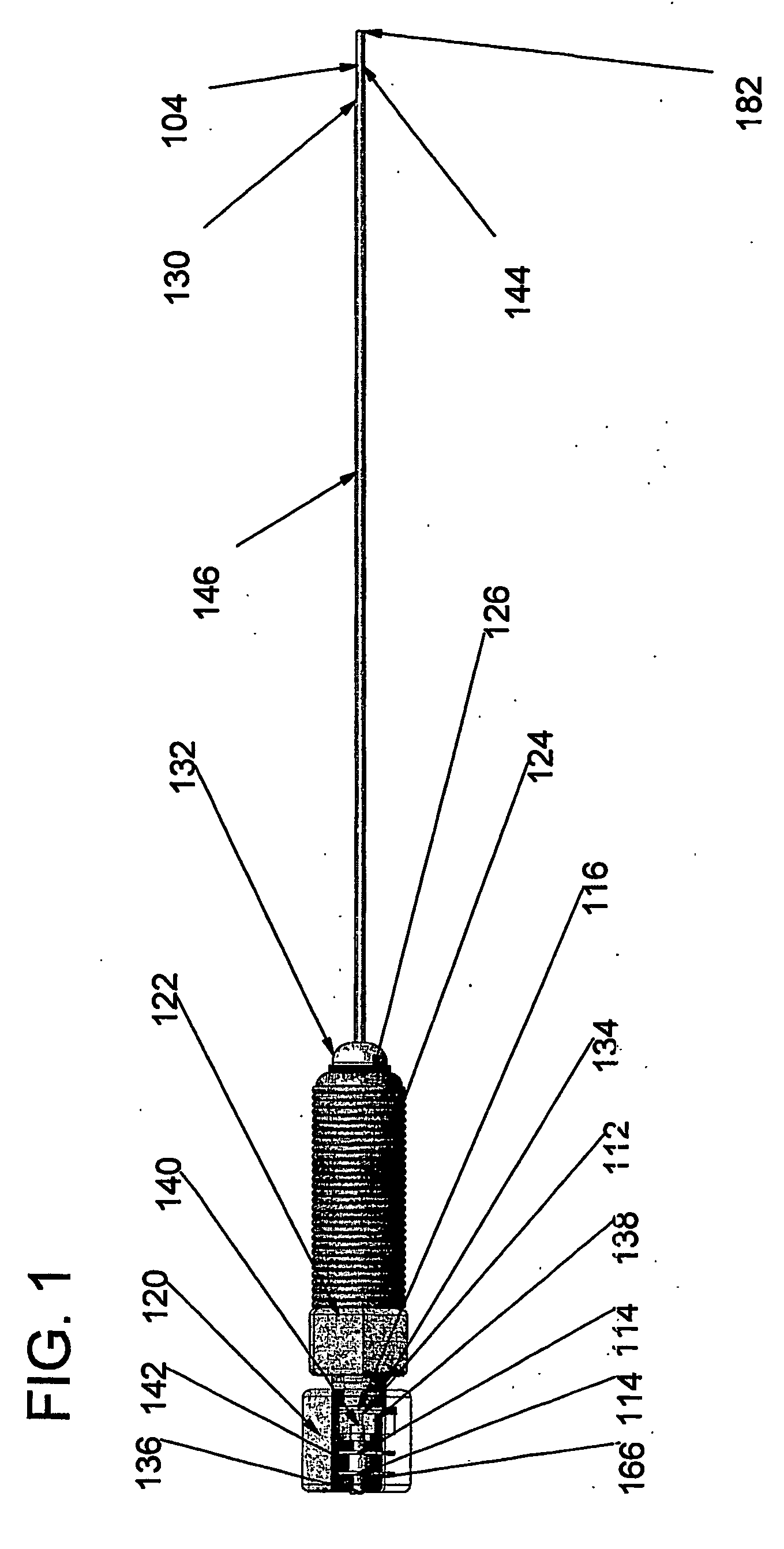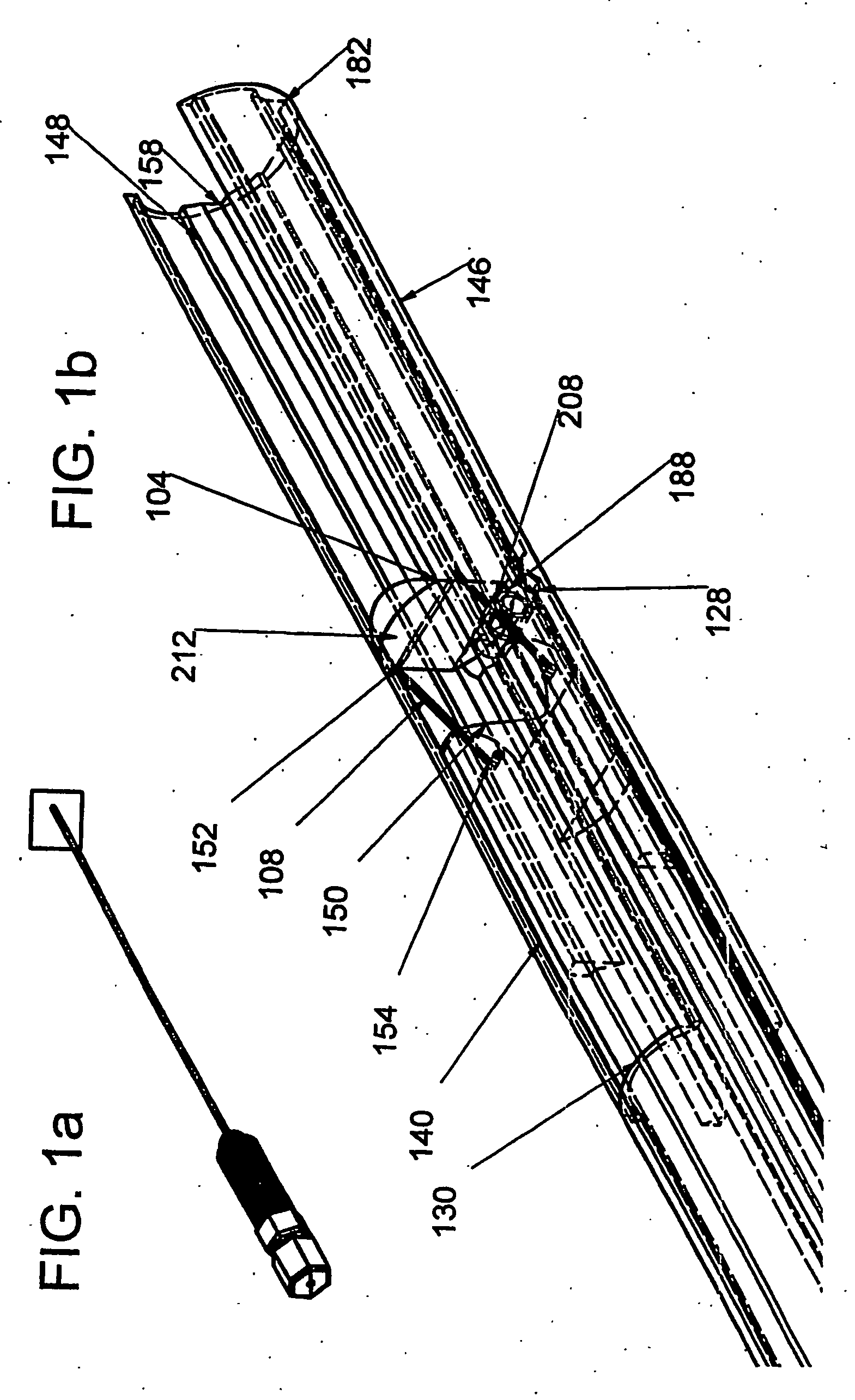Adjustable Device Delivery System
a delivery system and adjustable technology, applied in the field of adjustable device delivery system, can solve the problems of inability to maintain a low profile, devices cannot achieve an adequate degree of angulation inside a delicate fixed space, injuring or compromising walls, etc., and achieve the effect of facilitating the rotation of the attachmen
- Summary
- Abstract
- Description
- Claims
- Application Information
AI Technical Summary
Benefits of technology
Problems solved by technology
Method used
Image
Examples
example 1
[0213]FIGS. 15a through 15m outline the use of the device for placement of a stent between two neighboring blood vessels. In each of FIGS. 15a through 15m, element 302 is the outline of the entry vessel down which the adjustable device delivery system is percutaneously delivered and element 304 represents a target vessel.
[0214]FIG. 15a demonstrates the native position of these two vessels. A guidewire can be percutaneously placed down a target vessel using, for example, techniques of external visualization like fluoroscopy. FIG. 15b shows such a guidewire (300) passing down the lumen of the entry vessel (302) in close proximity to the target vessel (304).
[0215] The adjustable device delivery system is inserted through an introducer sheath into the entry vessel. An operator would preferably have the adjustable internal door (104) in the open position, at an angle of about 0 degrees, with the locked applied if present. Maintaining the adjustable internal door in the open position en...
PUM
 Login to View More
Login to View More Abstract
Description
Claims
Application Information
 Login to View More
Login to View More - R&D
- Intellectual Property
- Life Sciences
- Materials
- Tech Scout
- Unparalleled Data Quality
- Higher Quality Content
- 60% Fewer Hallucinations
Browse by: Latest US Patents, China's latest patents, Technical Efficacy Thesaurus, Application Domain, Technology Topic, Popular Technical Reports.
© 2025 PatSnap. All rights reserved.Legal|Privacy policy|Modern Slavery Act Transparency Statement|Sitemap|About US| Contact US: help@patsnap.com



